Growing Salix Integra: ‘Perfect For A Small Garden, With Great Autumn Colour’

Chris is a gardening writer and nature enthusiast. He graduated from Oxford Brookes University in 2022 with an MA in Psychology. Chris works with the Leeds Green Action Society, helping their food cooperative by growing various fruit and vegetables on their two allotments in Hyde Park, Leeds.
Reviewed By COLIN SKELLY

Colin is a Horticulturist and Horticultural Consultant with experience in a range of practical and managerial roles across heritage, commercial and public horticulture. He holds the Royal Horticultural Society’s Master of Horticulture award and has a particular interest in horticultural ecology and naturalistic planting for habitat and climate resilience.
IN THIS GUIDE
WILLOW GUIDES
Container Growing
Pruning
Varieties
– Corkscrew
– Flamingo
– Weeping
This intriguing deciduous shrub is a dwarf member of the Salix genus, more commonly known as willow.
If you’re captivated by the willowy aesthetic but are in the majority of Brits whose garden is far too small to accommodate one, then it’s time to get yourself acquainted with Salix integra.
“Salix integra is perfect for a small garden, providing the horticultural highlights of the Willow family but taking up a fraction of the space of other species,” shares Master Horticulturist Colin Skelly.
“As well as spring catkins and attractive young growth, it has good autumn colour too.
“If you have moist soil or a stream bank, this is an ideal shrub or small tree. The only downside is that it isn’t really suitable for dry and sandy sites unless irrigation is on standby in summer.”
Boasting small white catkins, and with its canopy held proudly aloft by strong branches, this shrub makes a fantastic visual and ambient contribution to any outdoor space.

Grown alone, or incorporated into displays with other flowers and plants, you’re sure to enjoy the visual treats it offers, with the main season of visual interest taking place in late April and early May.
Overview
| Botanical Name | Salix integra ‘Hakuro-nishiki’ |
| Common Name(s) | Flamingo Willow |
| Plant Type | Shrub / Tree / Hedging |
| Native Area | North-East Asia |
| Hardiness Rating | H5 |
| Foliage | Deciduous |
| Flowers | Colourful foliage, yellow catkins |
| When To Sow | September, October |
| Flowering Months | April |
| When To Prune | February, March |
Sunlight
Preferred
Full Sun
Exposure
Exposed or Sheltered
Size
Height
1.5 – 2.5M
Spread
1.5 – 2.5M
Bloom Time
Spring
Soil
Preferred
Clay, loam, sand
Moisture
Moist but well drained
pH
Any
This dwarf willow cultivar is known as ‘Hakuro-nishiki’, which translates from Japanese as ‘Dappled Willow’.
The name references the pink and white dappled markings on the leaves, which are a real treat to behold.
The species is a native of northeast Asia, including Japan, Korea and Mongolia.1Salix integra. (n.d.). Kew Royal Botanic Gardens. Retrieved March 23, 2023, from https://powo.science.kew.org/taxon/urn:lsid:ipni.org:names:777860-1
Visually, it aligns well with a stereotypical Oriental floral aesthetic: gentle pinks and whites, with delicate leaves and petals.
Why Grow Salix Integra?
Many gardeners choose to grow a Hakuro-nishiki because of its size and appearance.
The willow family has some strongly characteristic members, including the weeping willow that we’re all familiar with.

Most varieties, however, are far too big to grow in the average British garden, meaning that those wanting to incorporate a willow are left to choose from just a small set of suitably sized varieties.
S. integra sits comfortably within this bracket.
S. integra’s popularity as a dwarf willow, along with how well-suited it is to grow in British conditions, has earned it the Award of Garden Merit from the Royal Horticultural Society.

So, if you’re looking for an attractive, easy-to-grow, and captivating shrub for your garden, S. integra is the way to go.
How To Grow Salix integra
Hakuro-nishiki is most often sold grafted onto the stem of another willow, because its own stem growth is prone to be relatively weak.
Grafting combines the beauty of S. integra with the structural integrity of a stronger plant, giving your shrub the best chance at sturdy growth.
Once planted, the shrub is fairly easy to care for.
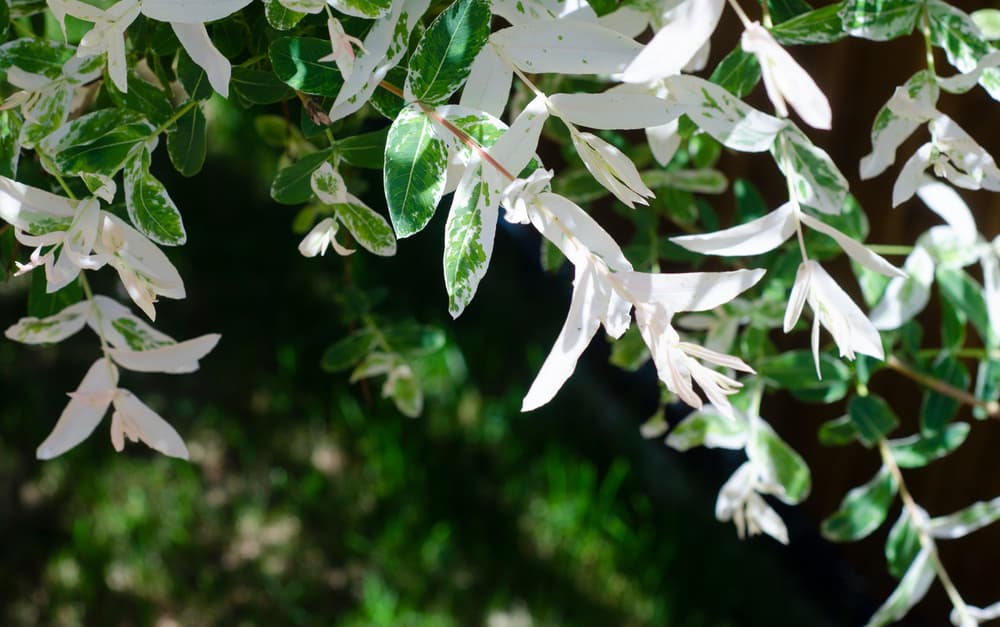
You’ll need to prune occasionally and keep an eye on soil moisture levels, but there are no quirks to be aware of that make this plant hard to grow.
Where To Grow
When you’ve bought your grafted Salix plant, you’ll want to find a spot in your garden that sits in full sun or partial shade.
Full sunlight isn’t required, but you will get to enjoy the most attractive colouration if your plant gets more sunlight.
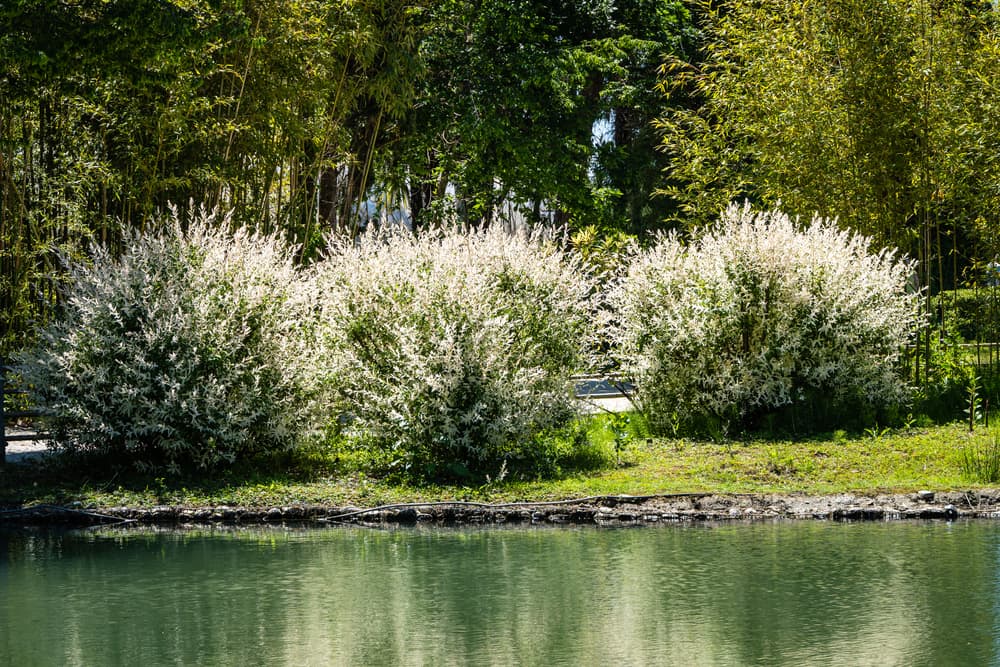
These trees grow naturally near flowing water, so they can tolerate more moisture than some others, but the soil they’re planted in must be able to drain well to prevent damage to the root system.
In terms of pH level, this plant isn’t fussy. It will grow in acidic, alkaline, or neutral soil.
Planting Tips
When you’ve found the right spot in your garden, remove your grafted shrub from its pot, and place into a hole about twice as wide as the root ball.
The hole should be about the same depth.
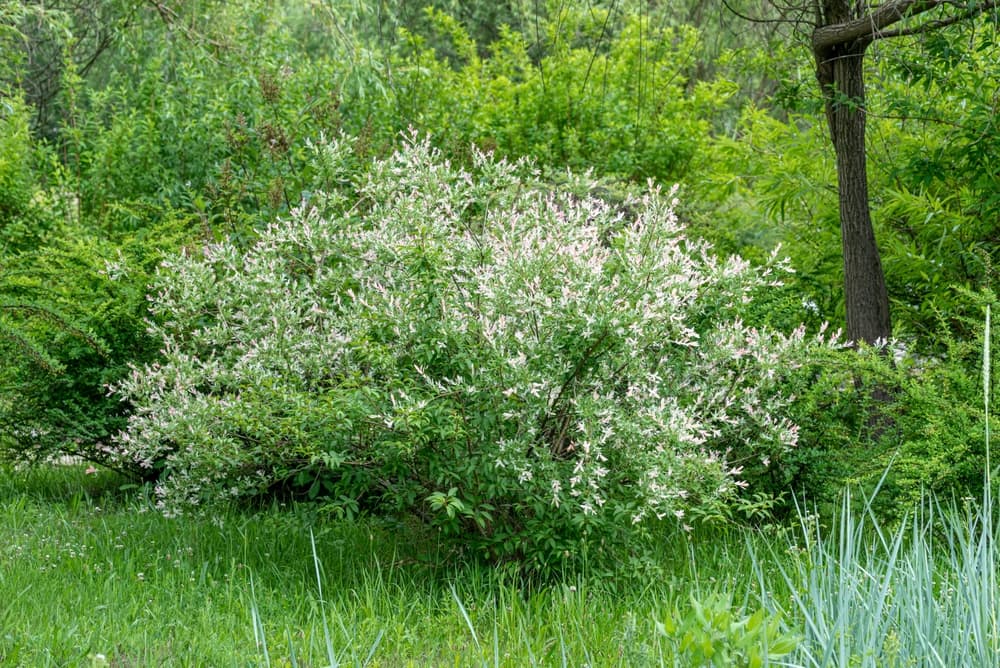
To prepare the hole, add some blood, fish, and bone fertiliser before planting the Salix.
Gently pack the soil in around the plant, ensuring it’s packed tightly enough to prevent much movement.
The plant should be about the same depth in the ground as it was in the pot, to reduce the risk of shock.
Leave around 60cm clear in each direction from the S. integra to give it space to grow.
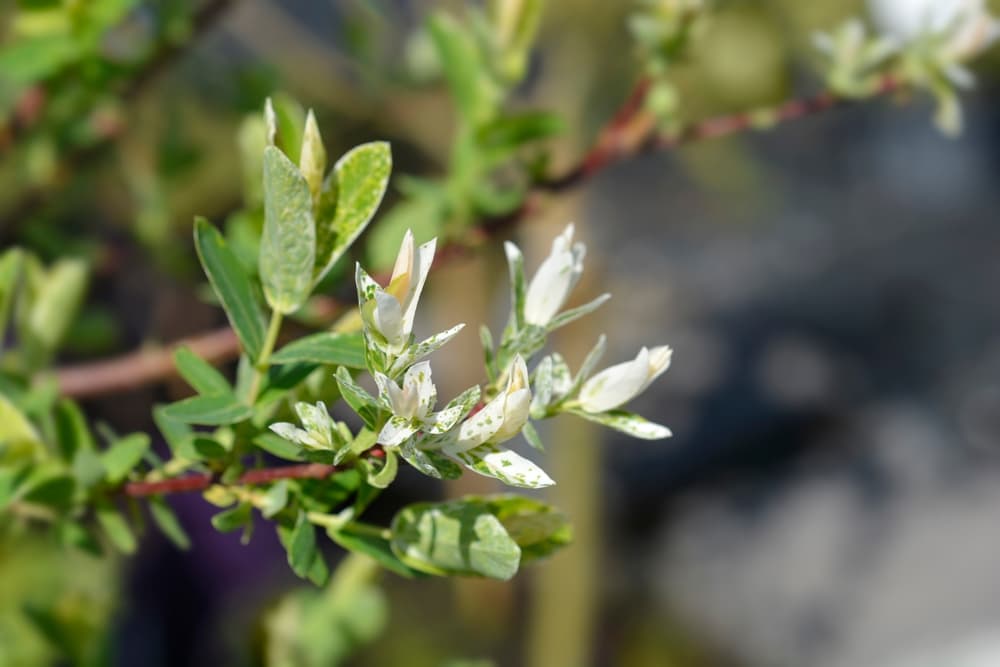
You can grow plants in the soil around and beneath your shrub, but let it get established first.
Fertilising
We mentioned adding blood, fish, and bone to the soil in the hole you plant your S. integra in.
This will ensure good nutrition for the fledgling shrub.
For ongoing care, S. integra likes a couple of inches of mulch each spring.
Apply this around the base of the shrub, leaving a small ring clear immediately next to the trunk.
Mulch will nourish your plant, but more important is the role it plays in conserving moisture and cooling the soil slightly.
For additional nutrition, you can work some slow-release fertiliser into the ground surrounding your plant.
Watering
This plant can be sensitive to drier conditions, so keep an eye on the moisture levels.
Once established, the weather should provide enough moisture to keep it healthy, but during particularly dry spells you may want to water it yourself.
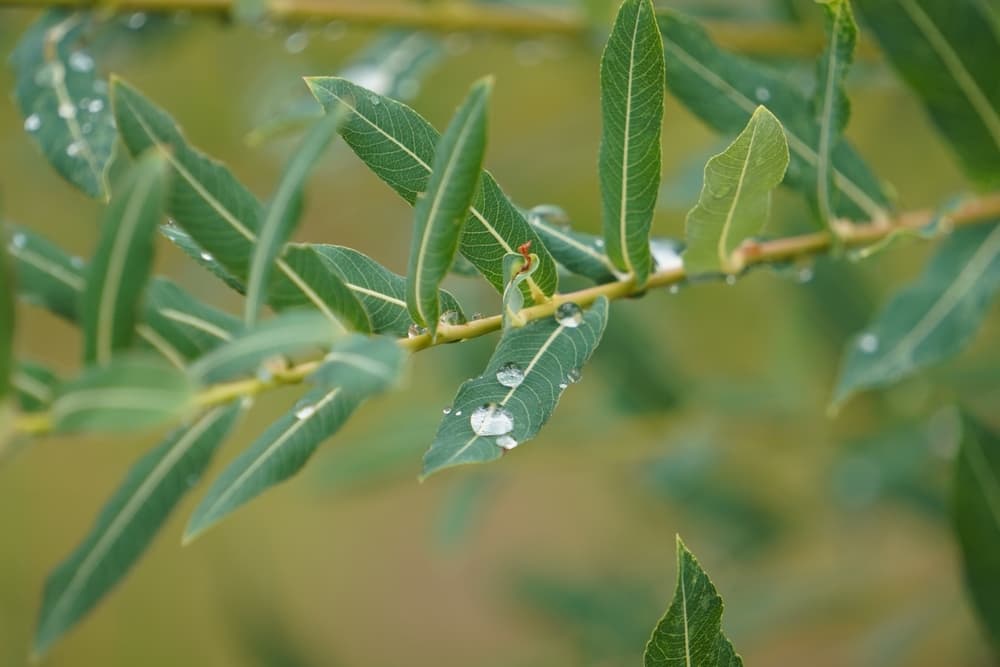
Immediately after planting, water the soil around the base of your S. integra.
This has the combined benefit of providing moisture, and in helping to pack the new soil down, keeping the plant stable.
Pruning
It’s possible to get a second yearly burst of beautiful pink bloom if you prune your S. integra properly.
The first thing to keep in mind is that you should avoid pruning in the first spring after you plant out your shrub.
Pruning this soon after planting will cause more harm than good, and you’ll see much better results if you wait until the plant is established before taking the secateurs to it.

The first time you prune your Salix, in the spring two years after the autumn you planted it, cut back by a third.
Remove sections that are touching the ground.
The next two times, cut back by half and again remove sections touching the ground.
Thereafter, you’ll be working with a plant with a fully developed root system.
At this stage in its lifespan, the S. integra can tolerate the most pruning.
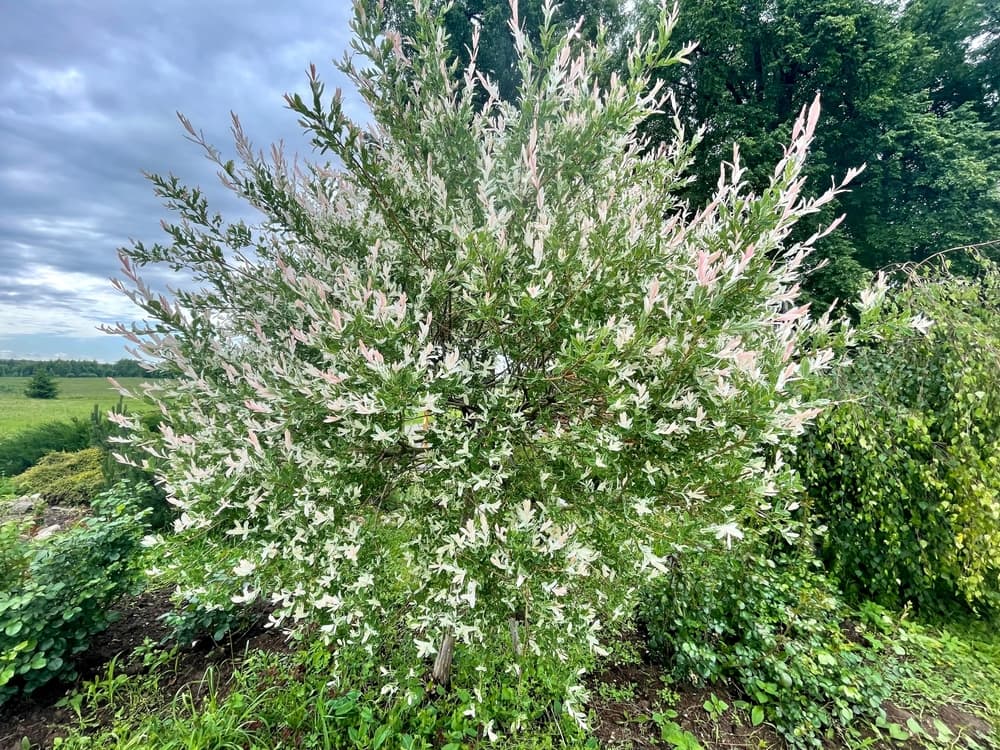
Trim back your shrub to 60cm in height – while it may feel severe and even counterproductive to trim away so much, doing so will encourage the largest amount of growth the following spring.
On top of this annual spring pruning session, you can cut back each stem by 30cm each July.
This mini-prune will encourage another beautiful bloom later in the year.
Common Problems
While unlikely, this plant is liable to experience various problems.
Familiarise yourself with the pests and diseases in this section to ensure quick and effective action should your plant be unlucky enough to experience problems.
Aphids
These suckers will quite literally suck the sap right out of the leaves of your shrub or tree, causing ongoing stress.
They’re small and green, but visible to the naked eye if you look carefully.
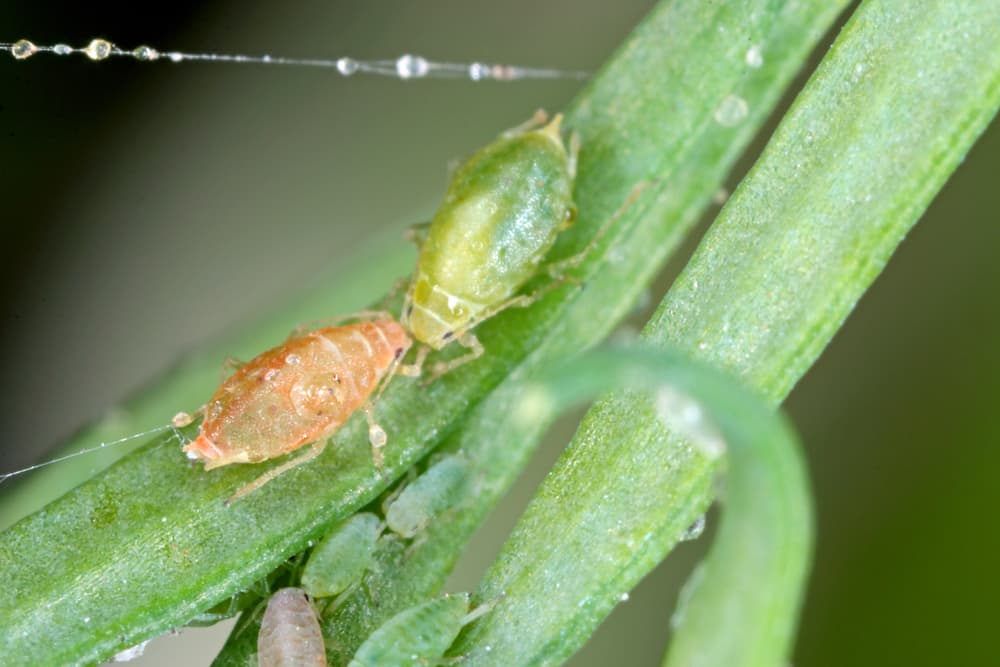
Try to brush away individual aphids or small groups, but if you notice them persevering on the plant nonetheless, consider moving on to more drastic measures.
Such measures include introducing ladybirds or other predatory bugs to eat the aphids, or using pesticides to kill them off.
Caterpillars
Baby butterflies are far less majestic and attractive than their more mature cousins.
Instead of fluttering daintily near your S. integra, they’ll have no shame munching its leaves and damaging its growth.
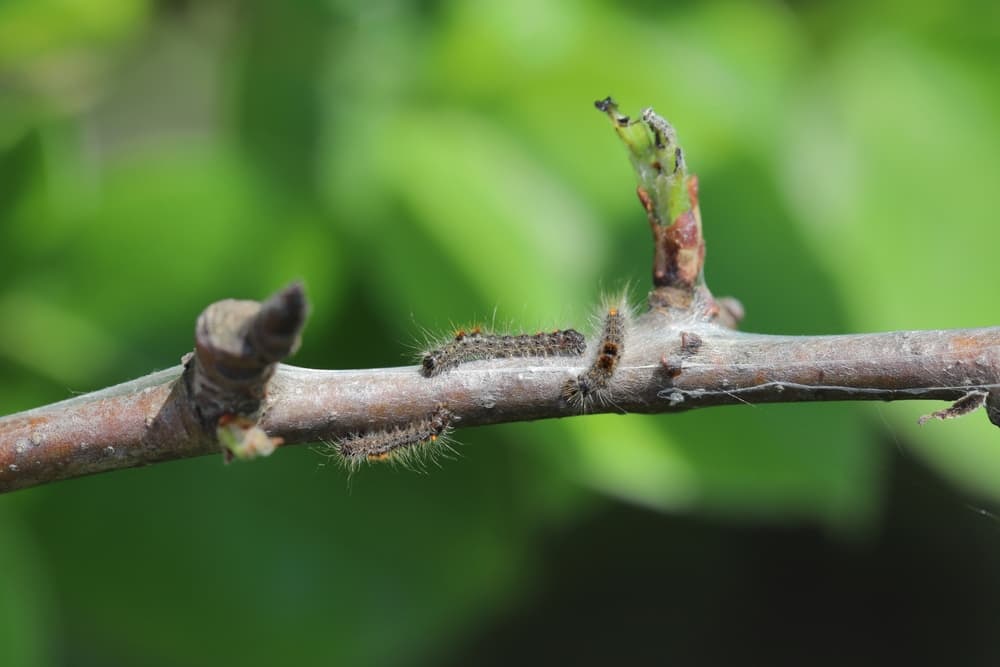
If you notice caterpillars, follow the same steps outlined above for aphids.
With caterpillars you also have the added advantage of being able to remove them before they hatch, preventing any damage to the vigilant gardener’s plant.
Canker
This malady is caused by fungal spores, which invade a plant and cause spots and scabs.
If you see black spots in spring or summer on an otherwise-healthy looking shrub, it may be indicative of infection.
As the disease progresses, the blemishes make their way along stems and toward the main trunk.

Each blemish puts forth spores in autumn which are then spread around the plant and to surrounding plants, causing further damage.
Sadly it’s not possible to treat existing cankers, but you can prune away infected sections and apply fungicides to nearby growth to reduce the risk of spread.
When it comes to canker, vigilance and quick action is of paramount importance.
Rust
Another fungal disease, this time causing rust-colour patches on leaves and plant damage as a result.
By picking off infected leaves as soon as you see damage, you may be able to stop the spread.
If you weren’t quick enough, however, various fungicides are available to keep things in check.
With rust, prevention is the best cure; avoid elevating the nitrogen content of the soil around your S. integra, as this promotes the type of growth most prone to rust.
Integrating A Hakuro-Nishiki
While subtle, having a dwarf shrub in your garden that evokes similar themes to a full-size tree contributes a very distinct visual element.
The shape and form of a S. integra can act as the basis or backdrop for all manner of visual displays.
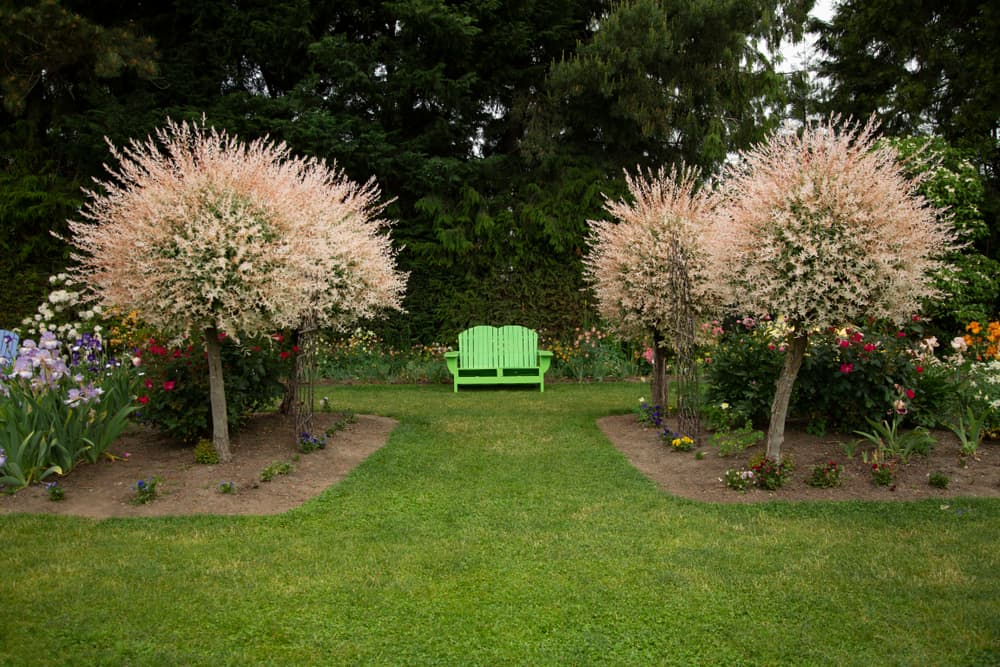
Its white-pink blooms look great against a wide array of colours – and a well-cared-for, mature shrub will make a fine centrepiece for your garden.
References
- 1Salix integra. (n.d.). Kew Royal Botanic Gardens. Retrieved March 23, 2023, from https://powo.science.kew.org/taxon/urn:lsid:ipni.org:names:777860-1
